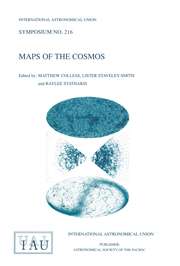Article contents
Properties of Faculae from Observations Near the Opacity Minimum
Published online by Cambridge University Press: 03 August 2017
Abstract
Imaging of active regions in continuum around 1.6 μm shows that many facular regions are less bright than the photosphere when observed nearer to disk center than μ = cos θ ~ 0.75. The contrast of these dark faculae increases with magnetic flux above a threshold of approximately 2 × 1018 Mx. This explains why not all faculae are dark at 1.6 μm, since the magnetic flux density in many regions of bright Ca K plage emission falls below this threshold. After correction for blurring, the typical contrast value is about 4-5%, so the brightness temperature deficit is about 130 K. Faculae are brighter than the photosphere at 1.63 μm nearer to the limb than μ ~ 0.5. The negative contrast of dark faculae may arise from cooling of the surrounding photosphere, or from increased visibility of cool layers of the facular flux tube itself. Quantitative comparison of these IR data with MHD models awaits calculation of flux tube contrasts at realistic angular resolution.
Information
- Type
- Part 1: Infrared Diagnostics of the Solar Atmosphere and Solar Activity
- Information
- Symposium - International Astronomical Union , Volume 154: Infrared Solar Physics , 1994 , pp. 23 - 27
- Copyright
- Copyright © Kluwer 1994
References
- 1
- Cited by

